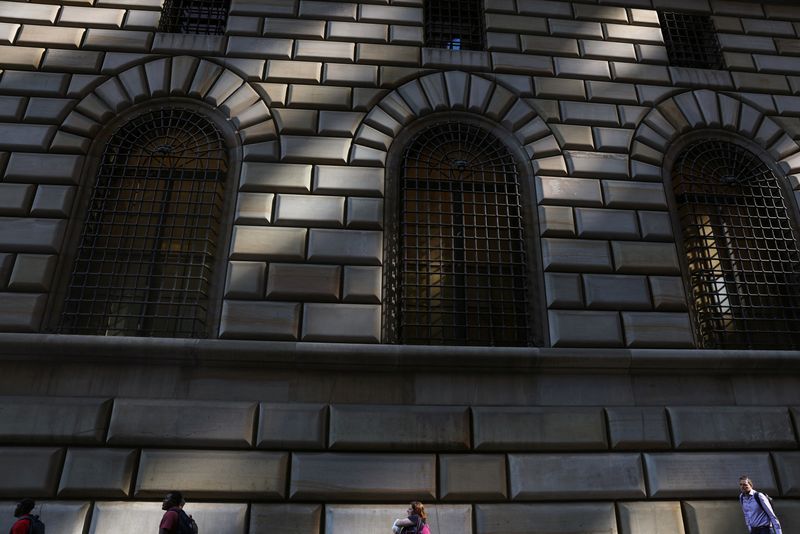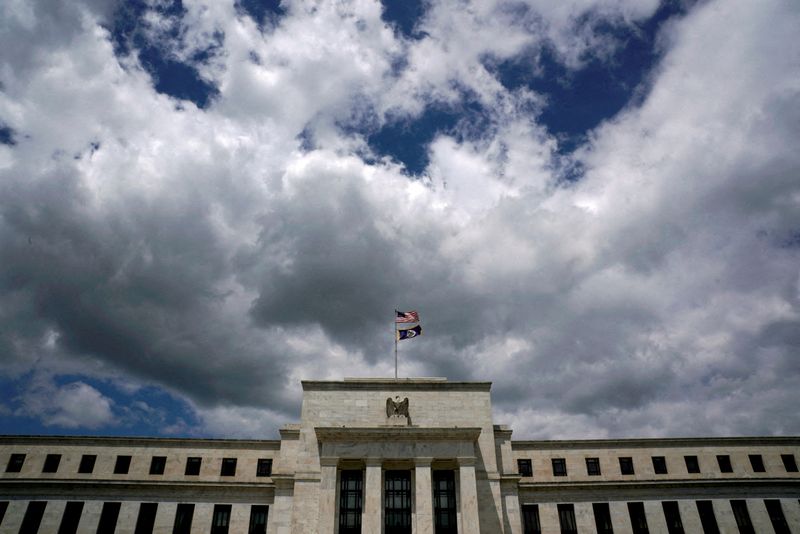By Michael S. Derby
(Reuters) -Overall borrowing levels in the U.S. rose modestly during the final three months of last year as more types of borrowing ran into trouble, especially on the auto front, even as overall difficulties remained below levels seen before the onset of the COVID-19 pandemic.
Total household debt climbed by $212 billion in the fourth quarter of 2023 to $17.5 trillion, the New York Federal Reserve said on Tuesday in its latest quarterly Household Debt and Credit Report.
Amid the rise in debt, delinquency rates and the transition into troubled status were both higher. The New York Fed said 3.1% of outstanding debt was in some type of delinquency, up one-tenth of a percentage point from the third quarter. But overall delinquency rates were 1.6 percentage points lower than in the last quarter of 2019 before the pandemic struck.
The New York Fed report describes credit conditions in an economy that has been growing strongly amid historically low levels of unemployment and rising incomes. But at the same time, inflation has been high and the U.S. central bank has raised interest rates aggressively and kept short-term borrowing costs high, which in turn has made credit more expensive and challenging to manage for borrowers.
Some of those issues manifested in delinquency transition rates for all types of debt except student loans, which increased at the close of 2023, with 8.5% of credit card loans and 7.7% of auto loans running into trouble. Student loan payments are currently in an unusual situation given what had been a period of forbearance and forgiveness for many borrowers, amid a return to payments for many borrowers.
Delinquency rates have been rising from historic lows reached near the end of 2022, and households came into the pandemic with strong balance sheets that were then reinforced by trillions of dollars in government assistance.
"This has meant that while credit growth has accelerated, debt servicing costs have risen and delinquency rates have increased, the broad credit picture of the U.S. is not alarming," Gregory Daco, chief economist at EY, wrote. "What is more, with many homeowners locked in at low mortgage rates ... the effects of the Fed's historic tightening cycle have been much more muted than expected."
CREDIT CARD DELINQUENCIES
The New York Fed said in a blog posting accompanying the report that delinquency rates have been rising from very low levels in 2021 amid a retreat in government support efforts. In the case of auto loans, delinquency rates are now above pre-pandemic levels "and the worsening appears to be broad-based," New York Fed researchers wrote.
"Loans opened during 2022 and 2023 are, so far, performing worse than loans opened in earlier years, perhaps because buyers during these years faced higher car prices and may have been pressed to borrow more, and at higher rates," they wrote. Increased delinquency rates "merit monitoring in the months ahead, particularly with the amplified distress shown by borrowers in lower-income areas."
The report said auto loan balances overall were up by $12 billion to $1.61 trillion in the fourth quarter.

When it comes to housing, total new mortgage borrowing rose by $112 billion to $12.25 trillion in the fourth quarter, the report added. Meanwhile, credit card balances were up $50 billion to $1.13 trillion, while student loan balances rose $2 billion to $1.6 trillion in the last three months of 2023.
The New York Fed noted "serious credit card delinquencies increased across all age groups, notably with younger borrowers surpassing pre-pandemic levels." It added that the number of mortgage loans transitioning into trouble remained historically low, while noting a rise in borrowing through home equity lines for the seventh straight quarter.
